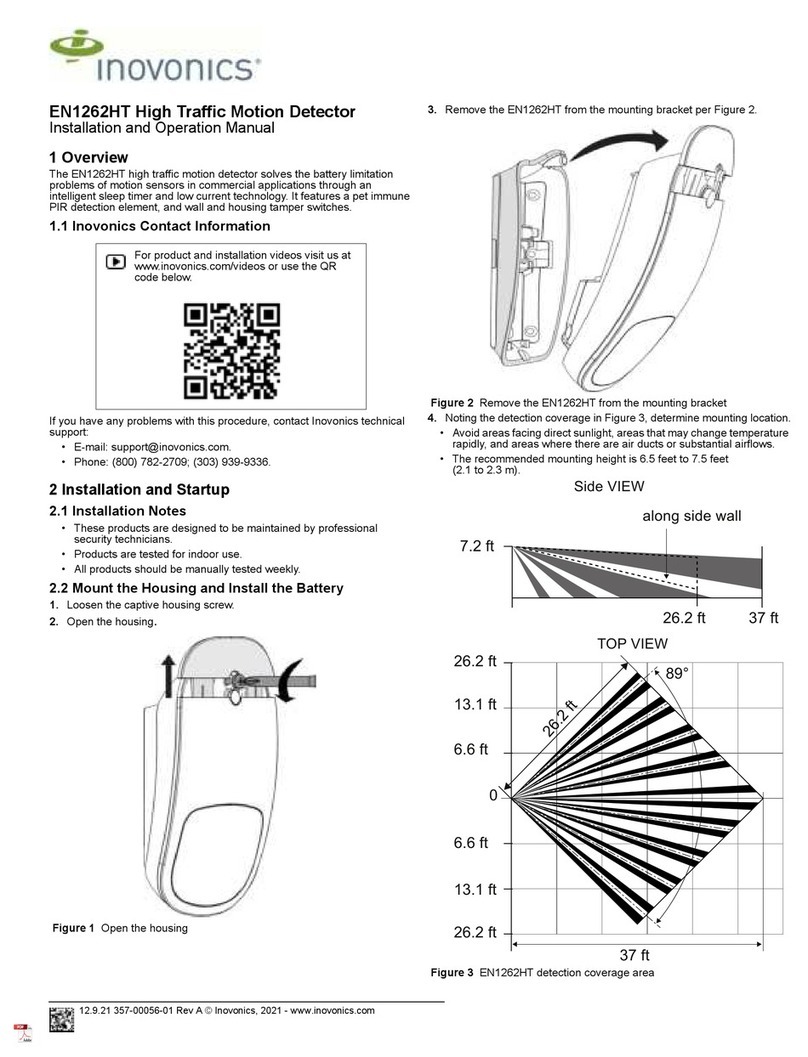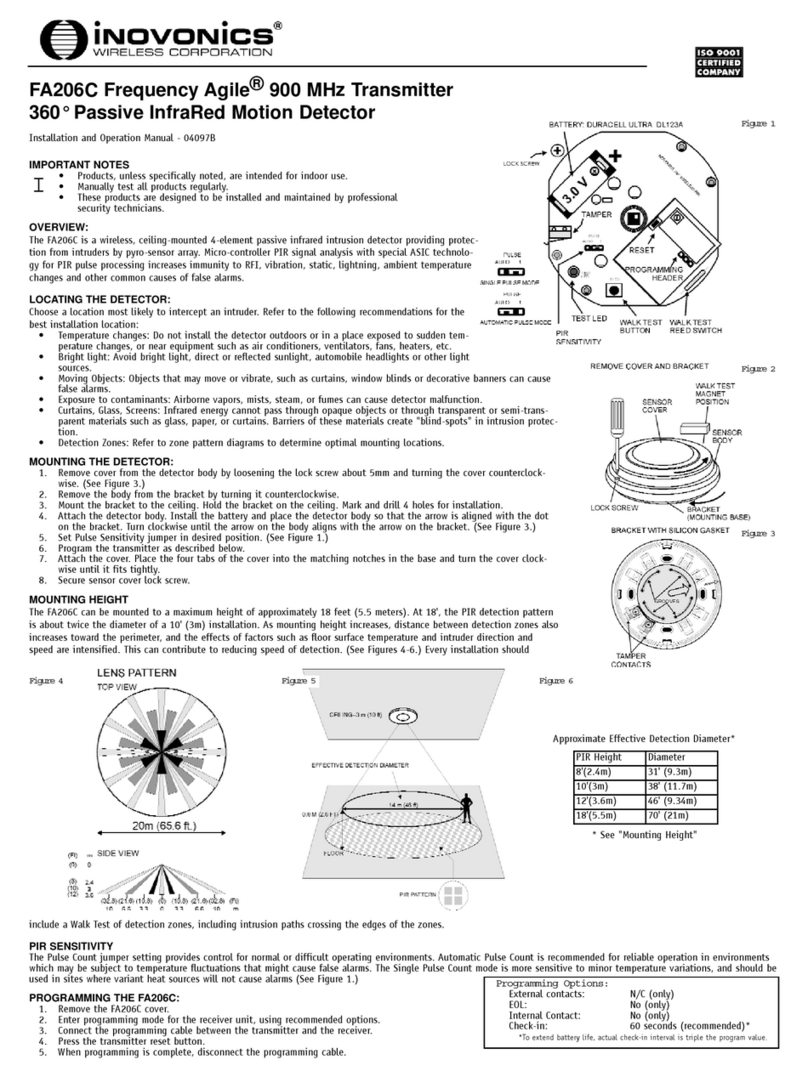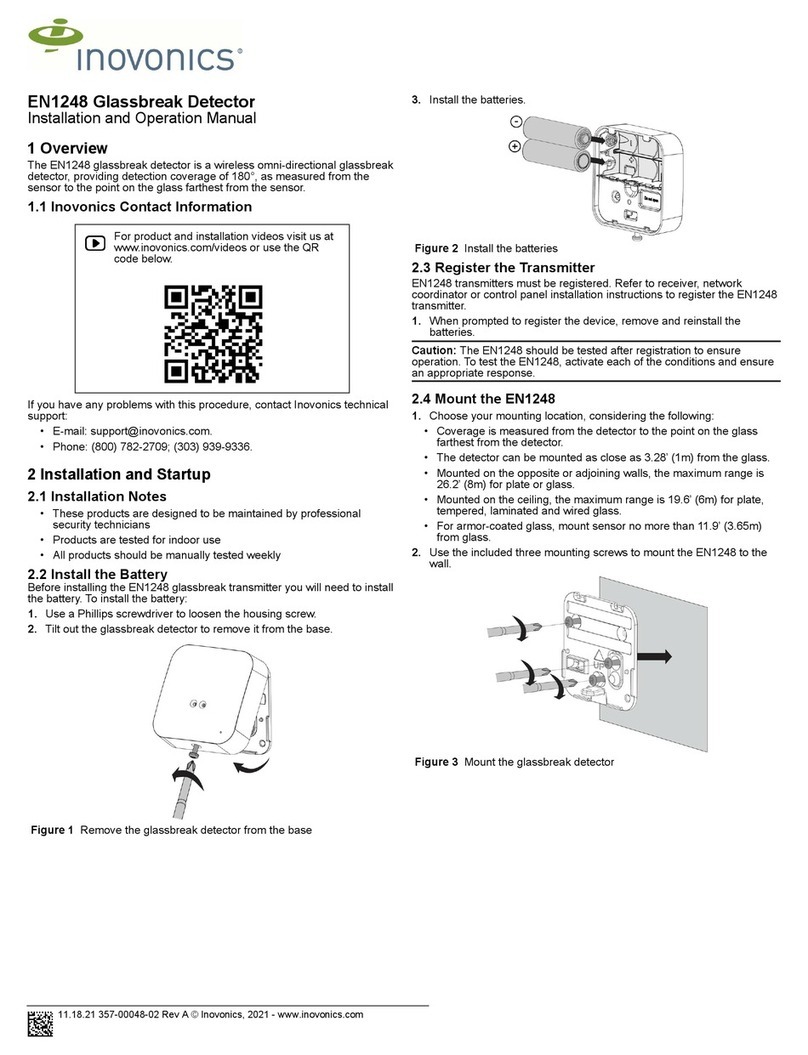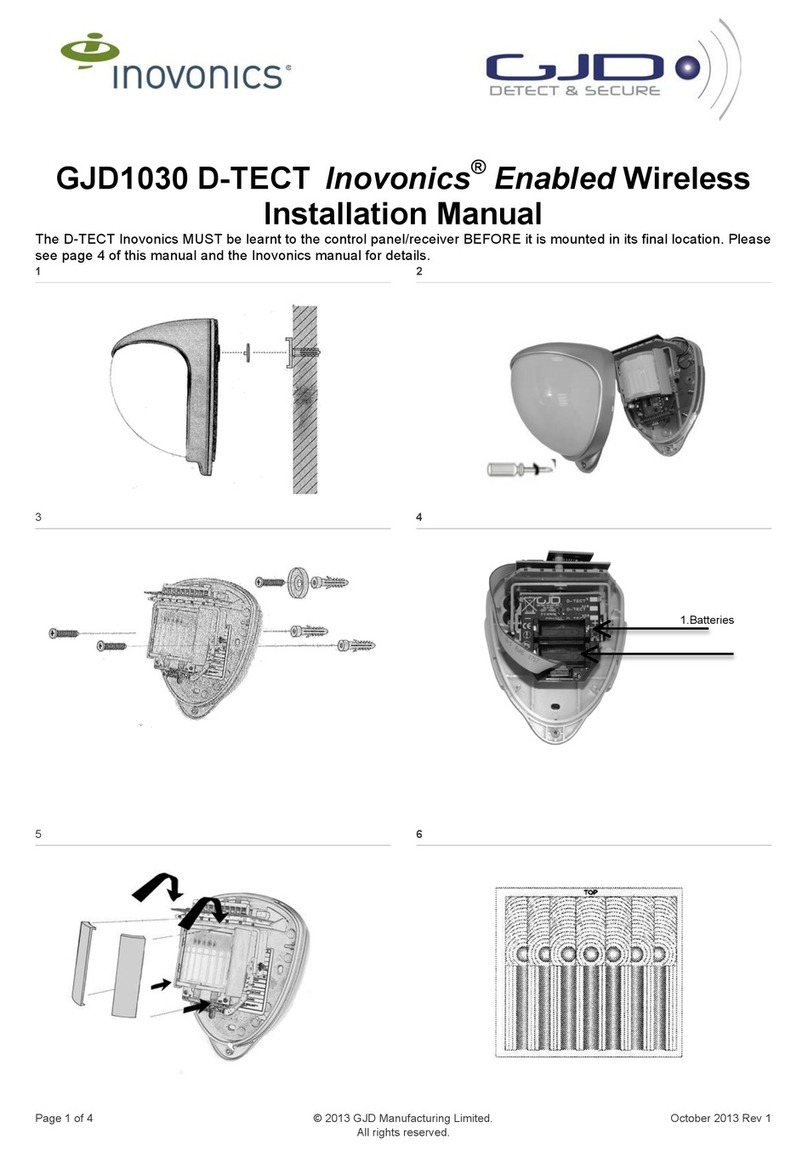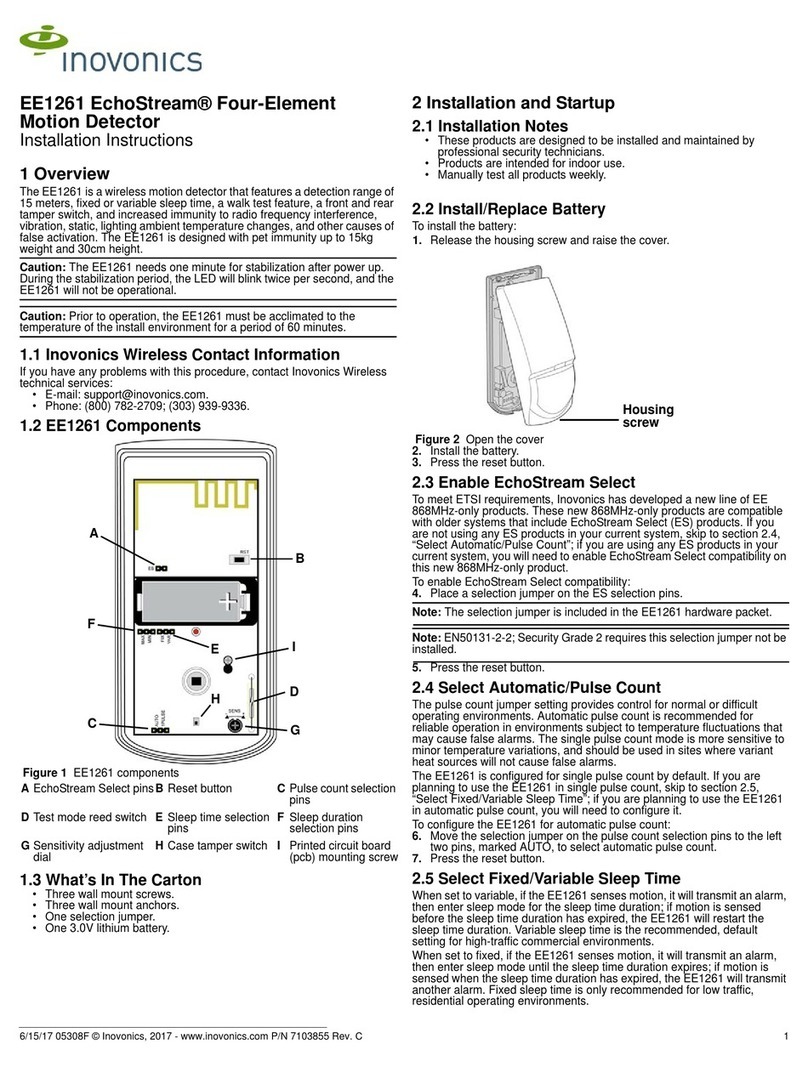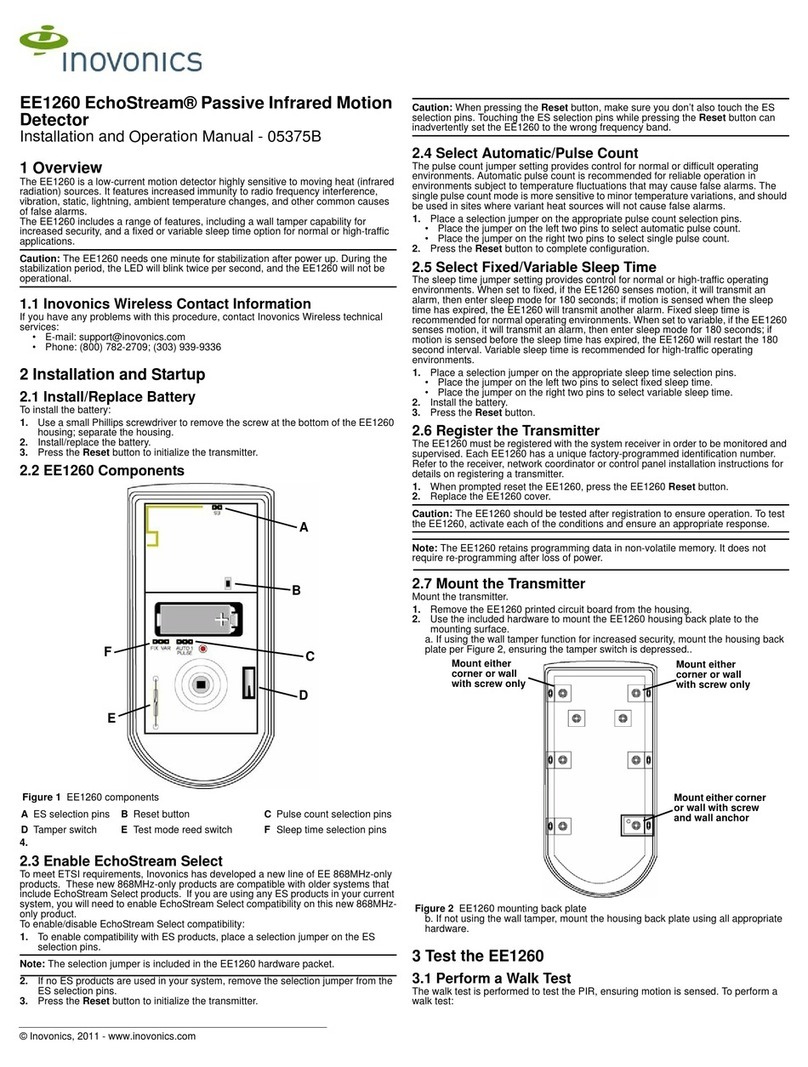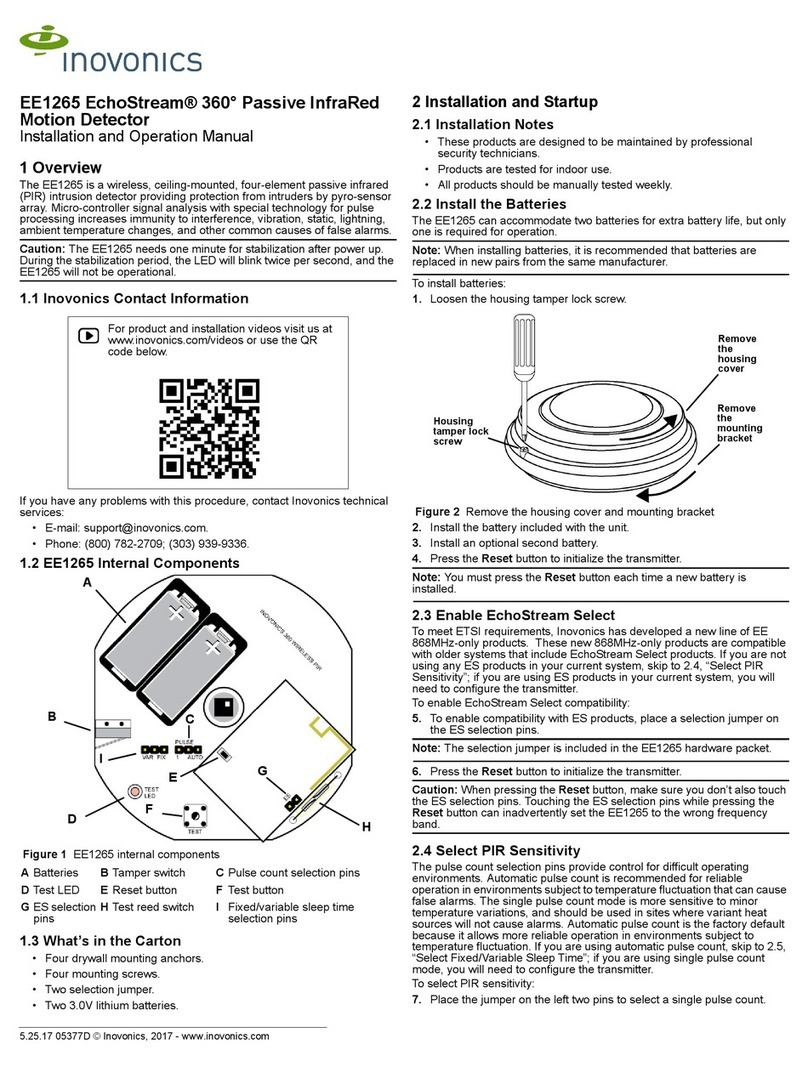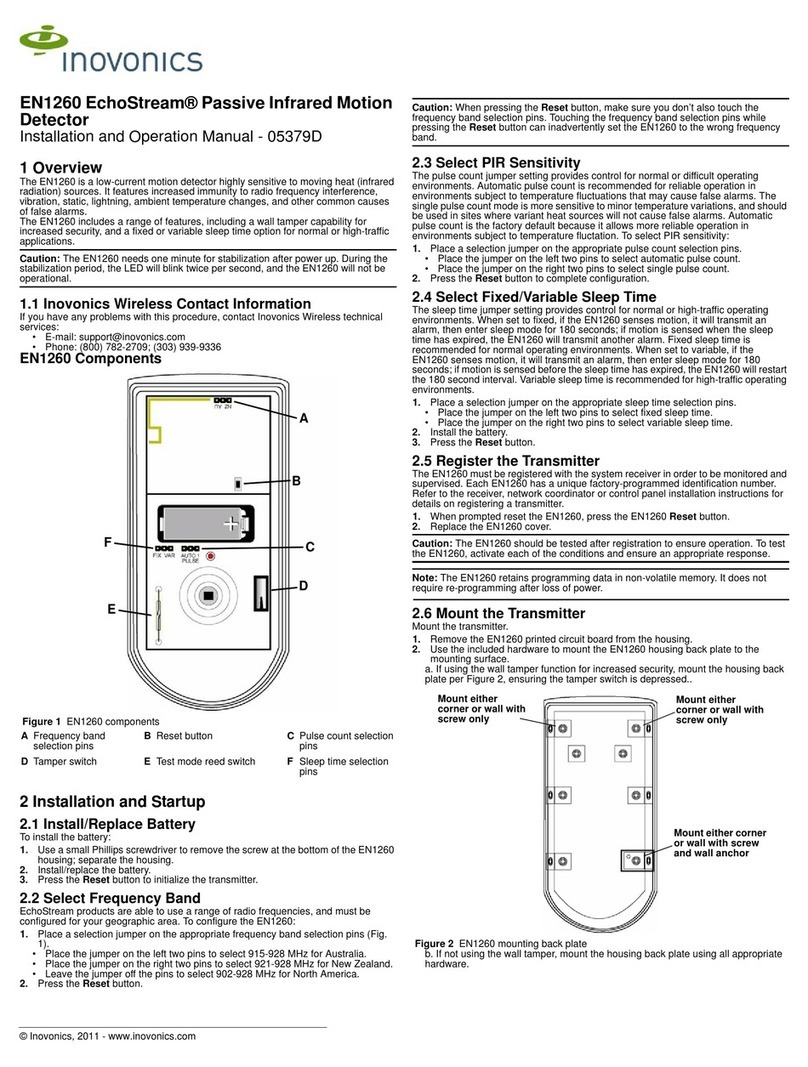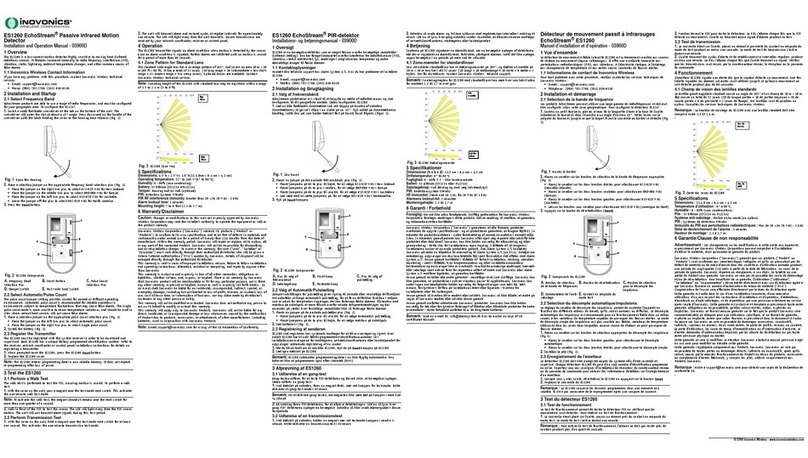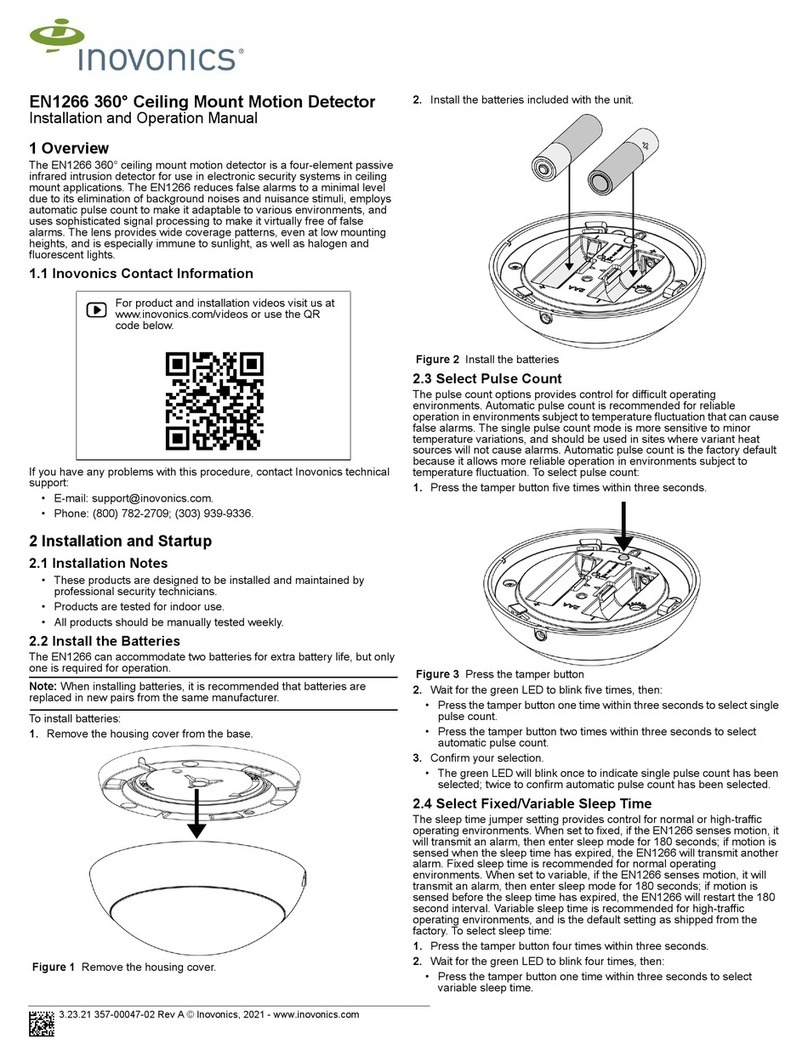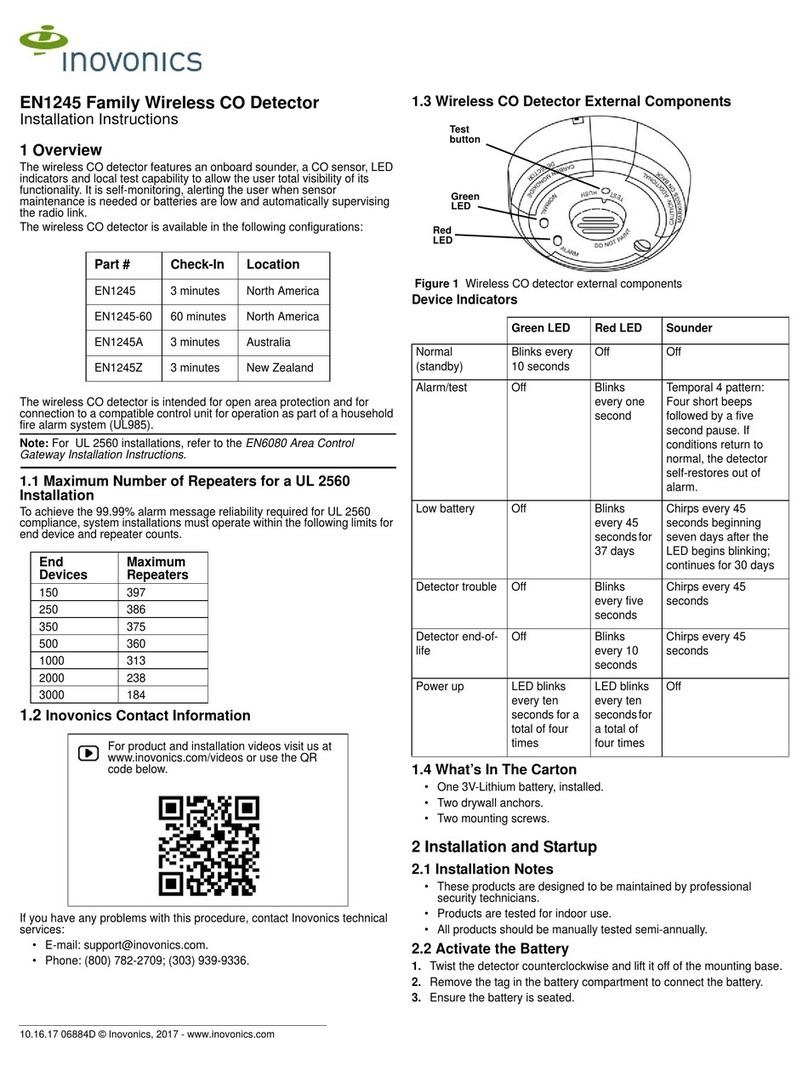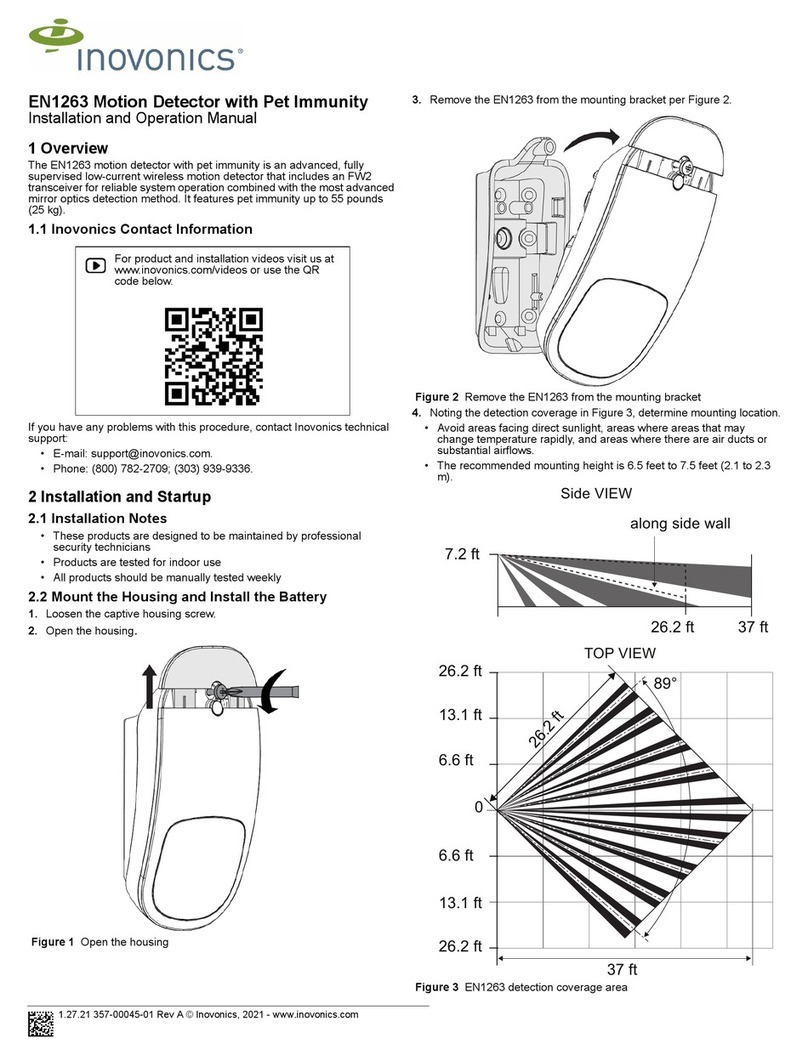
10.25.16 06809A © Inovonics, 2016 - www.inovonics.com
EN1751 Water Detector
Installation Instructions
1 Overview
The Inovonics EN1751 water detector is used with the Honeywell® FP280
probe, sold separately, to detect water from leaking hot water heaters or
similar appliances, alarming when 1/4” or more of non-distilled water is
present. The EN1751 water detector sends a primary alarm (alarm0) to
indicate the presence of water, and a secondary alarm (alarm1) to indicate
other fault conditions described in section 4, “Operation” on page 2.
1.1 Inovonics Contact Information
If you have any problems with this procedure, contact Inovonics Wireless
technical services:
• Phone: (800) 782-2709
1.2 EN1751 Components
Figure 1 EN1751 components
1.3 What’s In The Carton
The following are included with individual units only; they are not included
in bulk sales.
• Three wall mount screws.
• Three wall mount anchors.
• Two selection jumpers.
• One 3.0V lithium battery.
2 Installation and Startup
2.1 Installation Notes
• These products are designed to be installed and maintained by
professional security technicians.
• Products are intended for indoor use.
• Manually test all products weekly.
2.2 Install the Battery
1. Pry the top lip of the mounting bracket up, and lift the bracket off of the
transmitter.
2. Use your thumb to depress the housing release tab on the bottom of the
transmitter; separate the housing.
3. Install the new battery.
4. Press the reset button to initialize the transmitter.
2.3 Mount the Honeywell FP280 Probe
The Inovonics EN1751 water detector is used with the Honeywell FP280
probe. To mount the Honeywell FP280 probe:
5. Trim the FP280 probe wiring to the desired length.
6. Route the FP280 probe wiring through either the rectangular back
wiring cutouts on the back of the housing and bracket, or through the
rounded top wiring cutout at the top of the housing.
Note: If you want to use the cutout at the top of the housing, you will need
to trim the bracket.
7. Use a small screwdriver to attach the FP280 probe wiring leads to the
power terminal block.
8. Use double-sided tape to attach the FP280 probe to the bottom of the
water heater drip pan. If no drip pan is present, secure the FP280 on
the floor where water is likely to collect.
9. Press the reset button to complete configuration.
2.4 Select the Frequency Band
EchoStream products are able to use a range of radio frequencies, and
must be configured for your geographic area. This product ships with a
default frequency range of 902-928 MHz for use in North America. If you
are using the product in North America, skip to section 2.5, “Register the
EN1751 Water Detector”; if you are using the product in Australia or New
Zealand, you will need to configure the transmitter.
10. Place a selection jumper on the appropriate frequency band selection
pins.
• Place the jumper on the right two pins, marked NZ, to set the
frequency range to 921-928 MHz for New Zealand.
• Place the jumper on the left two pins, marked AU, to set the frequency
range to 915-928 MHz for Australia.
11. Press the reset button to complete configuration.
Caution: When pressing the reset button, make sure you don’t also touch
the frequency band selection pins. Touching the frequency band selection
pins while pressing the reset button can inadvertently set the single input
universal transmitter to the wrong frequency band.
2.5 Register the EN1751 Water Detector
The EN1751 water detector must be registered with the system in order to
be monitored and supervised. Refer to the receiver installation instructions
for details on registering a transmitter.
12. When prompted by the receiver to reset transmitter, press the reset
button.
13. Replace the cover.
2.6 Mount the EN1751 Water Detector
14. Attach the mounting bracket to the desired location, using the included
screws or double-sided tape.
Note: There are two mounting holes for standard installation. An optional
third mounting hole is located under the battery. Use the third mounting
hole to secure the housing to the bracket.
15. Hook the bottom of the EN1751 water detector into the bracket’s bottom
catch, and press the EN1751 into the bracket so that the bracket’s top
lip snaps into place.
For product and installation videos visit us at
www.inovonics.com/videos or use the QR
code below.
AFrequency band selection pins BTop wiring cutout
CReset button DProbe terminal block
EBack wiring cutout
